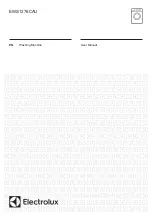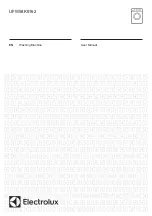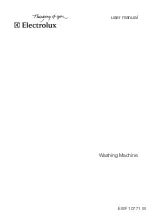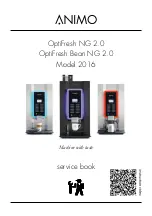
FO-IS125N
3 – 1
FO-IS125N
Service Manual
CHAPTER 3.
MECHANICAL DESCRIPTION
[1] Mechanical description
1. Facsimile block
1.1. Document feed block and diagram
2. Document feed operation
1) As shown in Fig.1, the document set in the hopper (the front sensor
is on) is fed with the let out roller and paper feed roller which rotate
together with the pulse motor.
2) When a specified number of pulses are received from the docu-
ment sensor after the document lead edge is sensed, scanning will
be started.
3) When a specified number of pulses are received from the docu-
ment sensor after the document rear edge is sensed, scanning will
be ended to discharge the document to the tray.
4) If the front sensor is on (the document is set up in the hopper), the
next document is supplied and fed nearly when the last document
is completely read and discharged. If the front sensor is off (no doc-
ument is set up in the hopper), the drive will be stopped when the
document is discharged to the tray.
3. Hopper mechanism
3.1. General view
The hopper is used to align documents with the document guides
adjusted to the paper width.
NOTE:
Adjust the document guides before and after inserting the doc-
ument.
3.2. Automatic document feed
1) The structure with secure paper feed of the transfer roller and
secure separation of the separation rubber system is employed.
The transfer roller is circular as to be rotated only when the paper
feed roller is driven with the 2-step paper feed clutch mechanism.
Moreover, the separation securely done by running the paper feed
and transfer rollers more slowly than the feed roller/
2) Document separation system:
Separation rubber/speed reduction ratio/roller backlash separation
system.
3.3. Loading the documents
1) Make sure that the documents are of suitable size and thickness,
and free from creases, folds, curls, wet glue, wet ink, clips, staples
and pins.
2) Place documents face down in the hopper.
• Adjust the document guides to the document width.
• Align the top edge of documents and gently place them into the
hopper. The first page under the stack will be taken up by the
feed roller to get ready for transmission.
NOTE: 1) Curled edge of documents, if any, must be straighten out.
2) Do not load the documents of different sizes and/or thick-
nesses together.
3.4. Documents applicable for automatic feed
NOTE:
Double-side coated documents and documents on facsimile
recording paper should be inserted manually.
Documents corresponding to a paper weight heavier than 90 kg and
lighter than 135 kg are acceptable for manual feed.
Documents heavier than 135 kg in terms of the paper weight must be
duplicated on a copier to make it operative in the facsimile.
Fig. 1
Fig. 2
Exit Pinch roller
Exit roller
Send feed roller
Feed roller
Back roller
CIS
ORG sensor
Front sensor
Sub feed plate
Separate rubber
Document
Fig. 3
Product specifications
Indication
Lower Limit
Upper Limit
Weight
indication
Metric system
indication
52g/m
2
80g/m
2
Thickness
indication
Metric system
indication
0.06mm
0.1mm
Document
size
Document size
Range
Minimum (148mm x 70mm)
A4 (210mm x 297mm)
Letter (216mm x 279mm)
Legal (216mm x 356mm)
Number of
ADF sheets
Document size
Weight
Minimum ~ Letter/A4 size 30sheets
Legal 5 sheets
More than 90 kg
Below 135 kg 1 sheet
Paper
quality
Kind
Paper of fine quality/bond paper/
Kent paper
Last document
First document
Feedroller
Separate rubber
















































